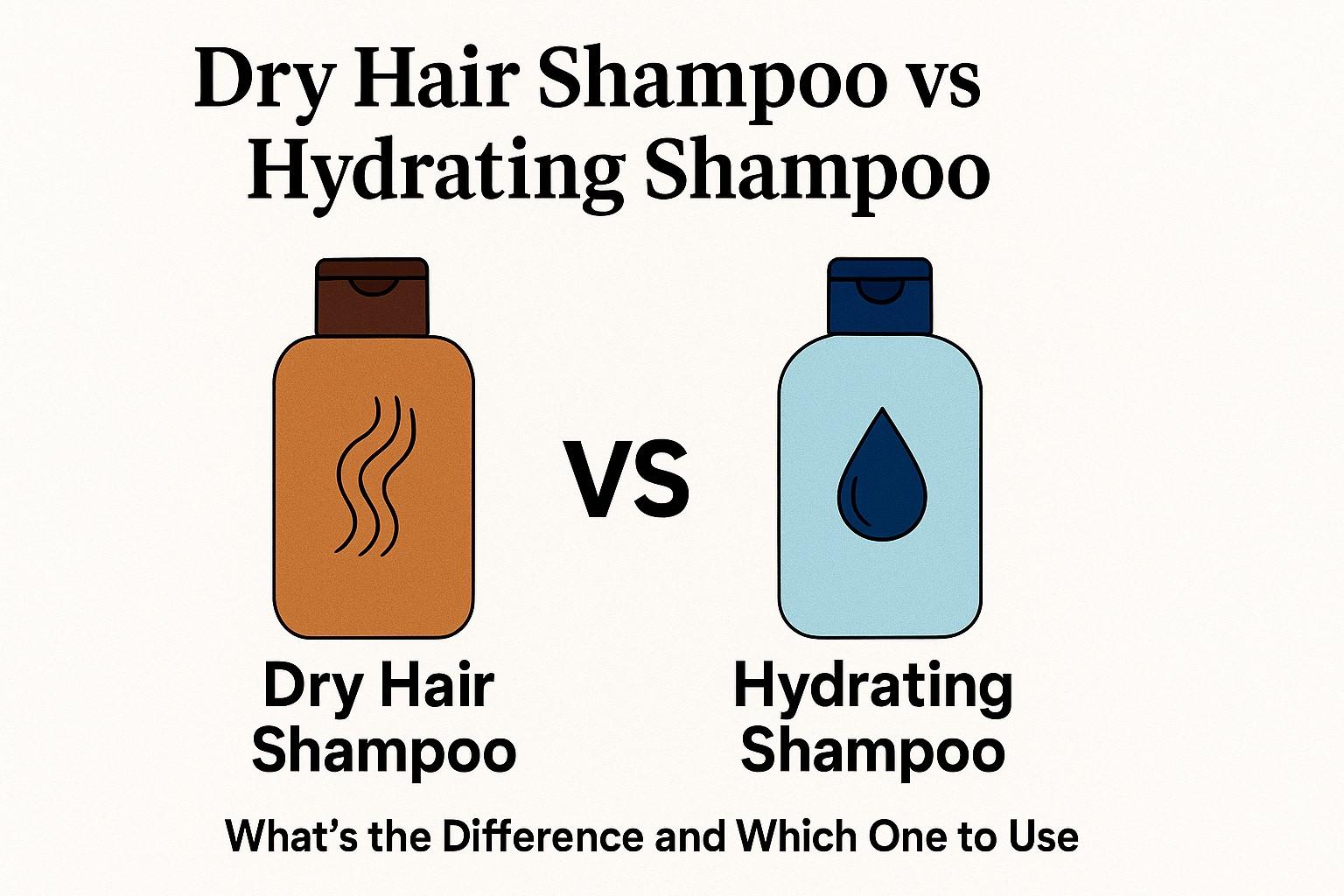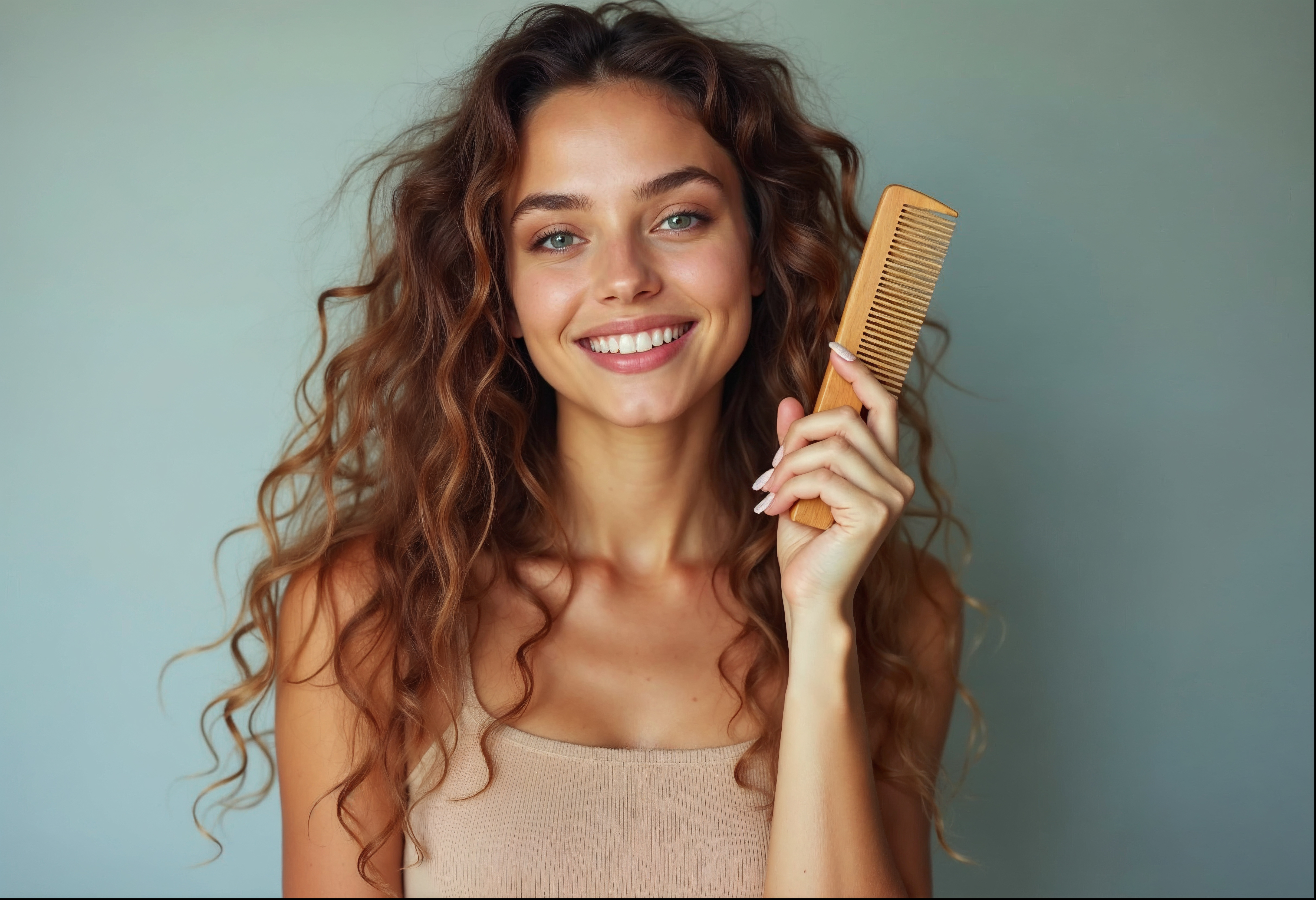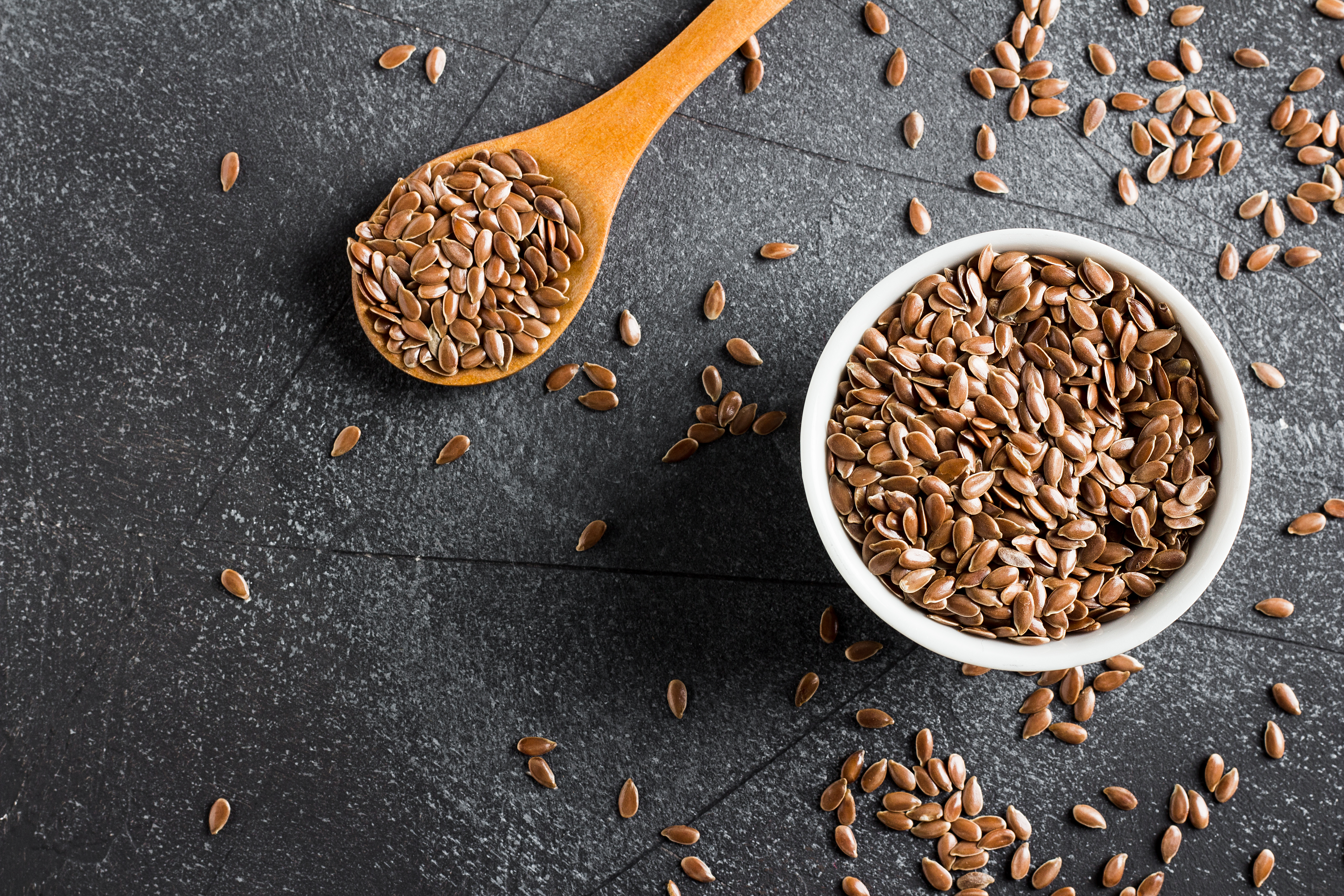Dry, frizzy, or damaged hair is an issue that many deal with, regardless of hair type. While there are a lot of things that can lead to this damage, like hot styling and pollution, or weather, your shampoo could be even more responsible than you think.
Shampoos are more than just a way to get rid of the gunk in your hair; they actually keep your moisture balance in check. Choose the wrong type and you could be stripping your hair of necessary oils and making dryness worse over the long term.
Dry hair shampoo and hydrating hair shampoo are both complex categories that are frequently misunderstood. Both purport to hydrate, soften, improve texture, and, ultimately, manage dryness, but each is designed to treat specific conditions and functions in different ways.
Also Read: Hard Water On Damaged Hair
What is Dry Hair Shampoo?
Dry shampoo is a hair product that you use to freshen up your hair when water isn’t available. It usually exists as a spray or powder and is formulated to soak up that excess oil, sweat and dirt that accumulates on your scalp between washes. It makes your hair appear cleaner, less greasy, and more voluminous without a dunk in the shower.
It’s perfect for rushed mornings, traveling or any time you want to give your hair a fast revamp. It’s not going to do the same deep cleanse as regular shampoo but it offers a convenient way to elongate the period between full washes, and may add extra texture and body to your hair.
Purpose of Dry Hair Shampoo
Dry hair shampoo is used to regain moisture equilibrium as well as to diminish structural damage. It restores depleted lipids, strengthens weakened strands with proteins and ceramides, and gives the scalp’s natural barrier the life support it needs without disturbing it more than necessary. Unlike normal shampoos, it places emphasis on nourishing and repairing, which puts more strength and softness in the hair, improving its health with regular use.
When should you use Dry Hair Shampoo?
Choose Dry Hair Shampoo if:
- Your hair is dry and rough, and it breaks easily.
- You’ve had chemical procedures (dyeing, bleaching, relaxing) in the past.
- You use heat tools semi-often (straighteners, curling irons, blow-dryers).
- Your hair is frizzy, thirsting for some hydration, plain, or thirsty-looking hair.
Key Ingredients of Dry Hair Shampoo
After understanding what is a dry hair shampoo, it is normal to wonder what’s in dry hair shampoo. These are some of the most frequently used and the most effective ingredients that you’re likely to run into:
- Natural oils, like argan, coconut, jojoba, etc., are similar to sebum and help to replenish the depleted lipids of the natural sebum of the scalp.
- Butters, including shea butter, which contains fatty acids. They shield and smooth down the hair’s roughened fibers.
- Hydrolyzed Proteins, most often keratin or silk protein that can strengthen the hair strand by attaching to areas that are weakened by damage.
- Ceramides, which protect the cuticle from damage and strengthen the hair cuticle.
Also Read: Hair Care Routine For Frizzy Hair
Benefits of Dry Hair Shampoo
- Leaves dry, damaged hair soft and manageable, applying it to the roots for a revitalising sensation from root to tip.
- Helps restore softness, elasticity, and shine.
- Aids in rejuvenating and restoring softness, elasticity, and shine.
- Aids in the reduction of breakage and split ends. Thanks to the reparative properties of their oils and proteins, which they derive from.
What is Hydrating Hair Shampoo?
Hydrating shampoo is a moisture-focused shampoo for normal to slightly dry hair, which leaves hair smooth and manageable. While dry hair shampoo focuses on damaged hair strands, this one is meant for hair that is simply seriously thirsty (but does not require a major fix).
It does so by drawing moisture into the hair shaft and closing its cuticle so it won’t dry any further. It’s great for people with hair that feels dry to the touch but doesn’t show obvious evidence of breaking or structural damage.
Purpose of Hydrating Hair Shampoo
Hydrating shampoo is designed to protect against mild and moderate dryness by increasing the hair’s ability to bind and retain moisture. It’s not one of those reparative, and it is only all about keeping moisture in the hair shaft and not overloading it.
This shampoo does wonders for anyone experiencing the harsh side effects of dry climates, product buildup due to heavy washing, and seasonal inflexibility. And it’s lightweight, meaning you can use it every day, your scalp will feel comfortable, and you’ll defy frizz, dullness, and even the very first signs of moisture loss.
When Should You Use Hydrating Hair Shampoo?
- Best use for daily or every other day in dry climates.
- Use when hair is thirsty, dehydrated, and lifeless but not damaged
- After flights or sun exposure, or when in aerated rooms.
- Balancing the product between deep treatments.
Key Ingredients of Hydrating Shampoo
- Glycerin & Hyaluronic Acid: Draw and maintain moisture
- Panthenol (Vitamin B5): Adds softness and shine
- Aloe Vera: Soothes and hydrates scalp and hair.
- Fatty alcohols: Smoothes and protects the shaft from moisture loss.
Benefits of Hydrating Hair Shampoo
- Lightweight and can be worn every day
- Frizz control and manageability
- Supports scalp hydration
Medically Relevant Differences Between Dry Hair Shampoo & Hydrating Shampoo
Although both dry hair shampoo and moisturizing hair shampoo offer a solution for dry hair, how they work is very different. Knowing these distinctions can inform your decision as to which product is best for what your hair needs, not just what it looks like.
Also Read: Hair Care For Seasonal Hair Fall
Here, side by side, is a fuller comparison of their purposes, formulations, and use cases:
| Aspect | Dry Hair Shampoo | Hydrating Hair Shampoo |
| Primary Goal | Repair hair that is structurally dry or compromised. | Maintains and improves moisture balance in mildly dry or frizz-prone hair. |
| Hair Condition | Severely dry, brittle, processed, or chemically treated. | Slightly dry, dull, or dehydrated due to environmental or routine factors. |
| Mechanism of Action | Restores internal structure by delivering proteins and lipids. | Attracts and retains moisture in the hair shaft to improve hydration. |
| Common Causes Treated | Damage to the cuticle and cortex, Lipid loss, Excessive styling/chemical use. | Mild dehydration, Humidity loss, Friction, or sun exposure. |
| Texture & Formulation | Thick, creamy, low-lather formula for deep conditioning. | Light, gel-like, or lotion-based for easy, frequent use. |
| Typical Ingredients | Ceramides, hydrolyzed proteins, natural oils, butters. | Glycerin, panthenol, hyaluronic acid, aloe vera. |
| Surfactant Strength | Extra-mild to preserve natural oils. | Mild enough for regular cleansing without stripping. |
| Usage Frequency | 2–3 times weekly as a treatment. | Suitable for daily or alternate-day use. |
| pH Compatibility | Formulated within a scalp-friendly range (4.5–5.5). | Also within the 4.5–5.5 range to support the scalp barrier. |
| Best Time to Use | When hair shows breakage, roughness, or loss. | When hair feels dry or dull but isn’t damaged or weakened. |
Which One Should You Choose?
Whether you go back and forth with your dry hair shampoo is also going to depend on your hair’s condition, not just your hair type or daily routine. It’s a question of whether your hair is damaged and you need to repair it, or your hair is just dry and you need to bolster the moisture that’s already there.
Choose Dry Hair Shampoo If:
- Your hair is dry and rough, and it breaks easily
- You’ve had chemical procedures (dyeing, bleaching, relaxing) in the past.
- You use heat tools semi-often (straighteners, curling irons, blow-dryers).
- Your hair is frizzy, thirsting for some hydration, plain, or thirsty-looking hair.
This is the sort of shampoo that is great at repairing damage, gaining strength, and keeping any more breakage at bay.
Choose Hydrating Hair Shampoo If:
- You have a dry or A/C environment.
- You shower all the time and want something mild.
- Your hair is dry-ish but not dead.
- You’re looking for Frizz control, Shine, and manageability.
Hydrating shampoo is ideal for daily use and is safe for colour-treated hair, and will leave your hair looking and feeling soft, shiny, and healthy with every wash.
Also Read: Expert Tips On Brushing Your Curly Hair
Dermatologist-Approved Shampoo Selection Guide
The best shampoo for your hair isn’t one that fits all by hair type, but it depends on factors such as scalp condition, safety of the formulation, and, quite simply, what the ingredients are doing for the hair.
Regardless of whether you want a dry hair shampoo or a moisturizing one, the following points may help you decide on a safe, effective product:
Look for Scalp-Compatible pH:
Go for shampoos that have a pH balance between 4.5 and 5.5, which is the pH level of the acid on your scalp. And pH-balanced products also help fight the good fight against irritation, dryness, and mucking up.
Avoid Harsh Surfactants and Additives:
- Sulfates (such as SLS, SLES) can strip the scalp and break through the barrier.
- Avoid shampoos with formaldehyde-releasing preservatives and synthetic fragrances, particularly if you have sensitive or inflamed skin.
Choose Your Formula for Hair and Scalp Concerns:
- For dry damaged hair, look for shampoos that have ceramides, hydrolyzed proteins, and nourishing oils to build up lipid content and strength of the fiber.
- For hydration support, products with humectants like glycerin, panthenol, and hyaluronic acid are good as they provide moisture retention without clogging follicles
Read Concentration of Ingredients and Clarity of Label:
- Look for clear labeling and an ingredient list that includes, in the top 5–7 listed ingredients, some of the clinically tested and confirmed ingredients.
- Keep to the straight and narrow and avoid words like “natural blend” with no active ingredients disclosed.
Match Your Shampoo To Your Scalp Condition:
- For someone with an oily or acne-prone scalp, opt for shampoos that contain light, noncomedogenic elements.
- Dry scaly scalps need Soothing hydration and anti-inflammatories, including aloe vera or zinc actives.
Trial Period Matters
- Trying any new shampoo twice is necessary to see the real results (assuming there are no adverse effects).
- If itching, flaking, or hair fall increases, stop use and consult with a board-certified dermatologist.
Can Dry Shampoo Be Used as a Substitute for Regular Shampoo?
The short answer is no. Dry shampoo freshens up hair when you don’t have time for a wash, but it doesn’t really clean. It soaks up surface oil and helps hair look less greasy for a bit, but sweat, dirt, and product build-up stay behind. If you lean on it too much, your scalp can start to feel clogged or uncomfortable.
Regular shampoo is different because it works with water to lift dirt, oil, and grime away. That deeper clean keeps the scalp clear and helps follicles stay healthy. Think of dry shampoo as an in-between helper, not a replacement for washing.
Cycle Your Shampoo: How Often to Use Each for Best Results
The healthiest routine mixes both. Here’s one simple approach:
- Hydrating shampoo – Wash two or three times a week. It adds moisture, eases dryness, and supports scalp health. This is especially useful for dry, curly, or color-treated hair.
- Dry shampoo – Keep it occasional, maybe once or twice between washes. Great after a workout, on long travel days, or when roots start to look greasy.
Over-washing strips natural oils and leaves hair brittle. Under-washing makes it flat and heavy. Finding the balance between the two is what gives the best results.
Choosing Between Spray vs Powder Dry Shampoo: Pros & Cons
Both types work, but they don’t feel the same.
Spray
- Quick and easy to apply.
- Adds volume at the roots.
- Can get heavy if used too much.
Powder
- Gives a natural finish and more control.
- Usually easier to target oily spots.
- Harder to blend into dark hair, and needs careful use to avoid residue.
If you have fine, oily hair, sprays often give the lift you need. For thick or curly hair, powders tend to work better.
Possible Side Effects of Using Dry Shampoo Too Frequently
- Clogged follicles that make the scalp uncomfortable.
- Itchiness, flakes, or dryness from product build-up.
- Strands that feel weaker and more breakable.
- Dull, heavy hair when layered too much.
- A false “clean” look, since it only masks oil and doesn’t remove dirt.
Dry shampoo is best in moderation. It’s a quick style fix, not a long-term substitute.
When to Reach for Hydrating Shampoo Instead
Hydrating shampoo works best when your hair feels rough, frizzy, or dry. Ingredients like aloe, natural oils, or glycerin lock in moisture and smooth out strands. These shampoos are especially useful for hair that’s been heat-styled, colored, or exposed to dry air.
If your scalp feels greasy, though, hydrating shampoo alone won’t solve the problem. That’s when rotating with dry or clarifying shampoos helps keep balance.
Conclusion
Dry shampoo for damaged hair is perfect for all levels of damaged, weak, brittle, dry, color-treated, and fine as well as safe for relaxed and keratin-treated hair. Hydrated hair shampoo, meanwhile, is intended to keep a small amount of moisture in slightly dry or frizzy hair but not weigh it down. After knowing what is dry hair shampoo and hydrating hair shampoo are, selecting the perfect one for your hair type is easier.
FAQs
How long does dry shampoo last?
The life of dry shampoo can range from a couple of hours to an entire day, all depending on hair type and how much oil your scalp pumps out.
Can you use dry shampoo on colored hair?
Yes, the vast majority of dry shampoos are color-safe, but it’s a good idea to scan for alcohol-based ingredients, since they can strip color.
Does shampoo for hydrating hair make your hair heavy if it is fine?
Too-moisturizing hydrating shampoos can drag down most fine hair, which is why it is important to find a light product.
What is the best way to avoid the buildup of dry shampoo residue?
To prevent residue, wave the can of dry shampoo back and forth as the product shoots out. This will give you a more diffuse application, rub it in really well, especially at the roots.
Can I use dry shampoo as well as hydrating shampoo?
You can use both, but be aware of dry shampoo buildup. Go with hydrating shampoo for standard washes and dry shampoo for freshening in between.
How are you supposed to apply hydrating shampoo for dry hair?
Lather on wet hair, concentrating on the scalp and ends, leaving on for 1-2 minutes to allow the ingredients to deeply penetrate whilst hydrating.
Is hydrating shampoo good for hair extensions?
Yes, you can use hydrating shampoo on hair extensions, but look for a sulfate-free formula to avoid any damage.
Can I use hydrating hair shampoo for oily roots and dry ends?
Yes, you can use hydrating shampoo on the ends, but if your roots tend to get greasier, use a lighter shampoo there.
Can I use dry shampoo if I have dandruff?
Dry shampoo can help sop up oil, but if you’ve got dandruff, your best bet is a medicated shampoo created for your scalp.
Is hydrating hair shampoo safe for children?
Yes, hydrating shampoo is usually fine for kids, though you may want to start with a mild, tear-free formula to prevent irritation.
Can dry shampoo damage my scalp if used too often?
Yes. Overuse without proper washing can clog pores and irritate the scalp.
Will hydrating shampoo weigh down fine hair over time?
It can. Choose lightweight, sulfate-free formulas if your hair is fine.
Is there a hybrid product that combines both hydrating and dry shampoo?
Not a true one, but some dry shampoos add conditioning agents for a softer finish.
Do I need to clarify my hair after using dry shampoo regularly?
Yes. A clarifying wash every couple of weeks clears away residue.
Which shampoo works better in humid vs dry climates?
In humid weather, dry shampoo keeps oily roots in check. In dry climates, hydrating shampoos are essential for moisture.



